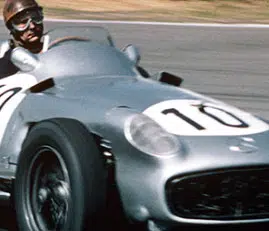2007 F1 World Championship
- 2007
- F1
- F1 World Championship
This was the year of the painful “Spygate” affair and the best prepared and most impressive rookie in the history of Formula 1 so far. 2007 was also the year that Kimi Raikkonen finally translated undoubted natural speed into World Championship success.
The Finn replaced Michael Schumacher at Ferrari and immediately won the Australian Grand Prix on his debut for the team. Three further victories followed but he entered the last two races 17 behind McLaren rookie Lewis Hamilton with just 20 points available. However, he won those last two GPs as the Englishman stumbled to snatch an unlikely championship win. Felipe Massa won three times to finish fourth overall and clinch a new long-term Ferrari contract.
McLaren could not have come closer to winning the title for the first time this millennium but it was a fractious and controversial campaign. First the sport and then the politics. While two-time World Champion Fernando Alonso was expected to challenge for the title, it was Hamilton who stole the headlines – finishing his first nine races on the podium. He won four times to stand on the brink of the World Championship with two races to go. But he did not finish in China due to a puncture and only finished seventh in Brazil.
Alonso also won four times but ultimately both fell a point short of becoming World Champion. However, Alonso deliberately ruined Hamilton’s final qualifying run in Hungary and the Spaniard’s relationship with senior McLaren management was past breaking point. Worse still was the “Spygate” affair in which disaffected Ferrari engineer Nigel Stepney passed a dossier of technical secrets to McLaren Chief Designer Mike Coughlan. That led to a record $100m fine from the FIA and McLaren being stripped of its 2007 constructors’ points. It was an unseemly affair that overshadowed the season and its major protagonists.
If Ferrari and McLaren dominated on the track, then it was BMW Sauber that emerged as the best-of-the-rest. The ever-consistent Nick Heidfeld and impressive Robert Kubica finished fifth and sixth in the drivers’ standings. Heidfeld finished second in Canada on a day that his team-mate survived a frightening accident at the hairpin. That forced Kubica to miss the following weekend’s United States GP and Sebastian Vettel scored a point making his debut as his replacement in that race.
Renault promoted test driver Heikki Kovalainen to the race team in 2007. A difficult opening three races drew thinly veiled criticism from Team Principal Flavio Briatore but the affable Finn recovered to finish seventh in the championship. Second in atrocious conditions in Japan (held at Fuji for the first time since 1977) was the highlight as he edged the experienced Giancarlo Fisichella in the team.
Williams switched to Toyota power and proved more competitive than the works team. Nico Rosberg matured during his second season and finished fourth in Brazil. Having spent the previous six years as a test and reserve driver with only one Grand Prix start during that time, Alex Wurz finished third in Canada in what was his last F1 season. Also leaving F1 at the end of the year was Ralf Schumacher whose expensive Toyota contract had ended after three lacklustre seasons.
Mark Webber left Williams after two disappointing campaigns to drive the Adrian Newey-designed Red Bull RB3-Renault. Third at the Nurburgring, the Australian only lost a second place finish in Japan when Vettel’s Toro Rosso crashed into him during a safety car period. Vettel, who replaced the disappointing Scott Speed for the last seven GPs, was distraught that day but showed his promise by finishing fourth a week later in China.
Having ended the previous season in such competitive fettle, 2007 was a severe disappointment for Honda. Sporting the radical, some would say misguided, “Earth Dreams” ecological livery, the RA107 was a disaster. Jenson Button finished a lowly 15th overall and Rubens Barrichello failed to score an F1 point for the first time in 15 years. Even Honda’s second team Super Aguri were quicker on occasion with Takuma Sato finishing sixth in Canada thanks to an inspired tyre choice.
Equally heroic was Markus Winkelhock at the European GP on his only GP appearance for Spyker. He came from the pitlane to lead the opening lap having changed to wets as the rest of the field struggled in the Nurburgring monsoon. Team leader Adrian Sutil impressed throughout the campaign but eighth in Japan delivered the team’s only point.





